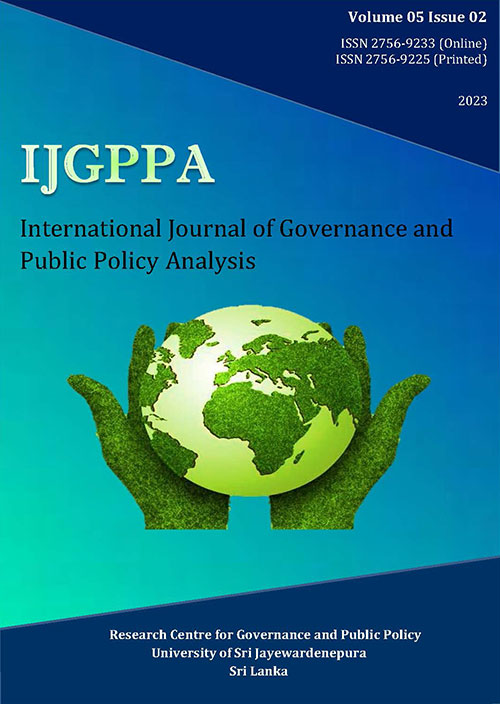Unmasking Opportunities and Challenges in the Colombo Port Mega Hub Transformation
DOI:
https://doi.org/10.31357/ijgppa.v5i02.7257Abstract
Colombo Port is a key transshipment hub in its region due to its strategic location, which connects feeder connections in the Indian sub-continent and main sea routes. Despite its historical significance, the port faces challenges due to evolving ship design and industry growth, leading to the emergence of competitors in nearby countries. Despite only having one of the three terminals initially planned, the Port of Colombo is transforming into a 'mega hub'. Delays in adapting to industry shifts have cost the port its potential market share, allowing newer ports in neighboring countries to compete for transshipment traffic. The transformation journey is hindered by various internal and external factors, including socioeconomic, political, environmental, and technological impacts. This paper aims to uncover the Port of Colombo's challenges in its transformation, exploring potential opportunities through qualitative analysis based on secondary data and existing literature. The study reveals that while the Colombo Port has promising opportunities, such as its strategic location, historical significance, enhanced maritime trade capabilities, regional connectivity, and potential economic growth, challenges like delayed adaptation to evolving trade dynamics impede its progress. Despite these obstacles, the port's aspirations to become a Mega Hub remain promising yet challenging.
Keywords: Port of Colombo, Port development, ‘Mega Hub’ Port, Transshipment Hub

